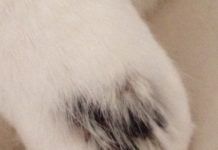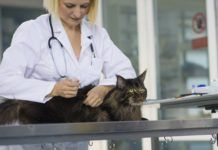What is Cobalamin Deficiency?
Recently, Lemon - a 14-year- old spayed female domestic shorthaired cat - presented to my cat hospital for weight loss and inconsistent appetite. One day she would eat normally. The next day, she would unenthusiastically pick at her food. I asked her owner if Lemon was also showing increased thirst and urination; but I was told no - that her thirst and urination were normal.
Feline Pain Management
Stub your toe, bump your head or cut your thumb while peeling an apple, and youre apt to give out a yell that will let the world - or at least the other members of your household - know that youre in pain. When it comes to dealing with pain, however, cats simply arent like that.
Diagnosis: Patellar Luxation
Anyone who has watched a cat use his strong legs to leap into the air or climb a tree can attest to their extraordinary athletic ability. But what happens if a cats joints - specifically the knees - do not function properly? This is the case for cats with patellar luxation, or dislocated kneecaps.
Dear Doctor January 2015
Ask the doctor - A Returning Growth; Safe Outdoor Excursions; Heart Murmurs
Potential new test for feline kidney disease; mammary cancer
A new biomarker called SDMA may be able to provide earlier identification of chronic kidney disease in cats - one of their leading causes of death - according to researchers from Oregon State University and IDEXX Laboratories.
FLUTD Surgery for Male Cats
Usually, it happens all of a sudden. Your male cat goes from being able to urinate normally to not being able to pass a single drop of urine. Other times, the condition becomes progressively worse over a couple of days. The cat starts straining to urinate and becomes very anxious or depressed, with an accompanying loss of appetite.
Research grants to benefit feline health; deer and toxoplasmosis
The Winn Feline Foundation recently announced new feline research grants funded in partnership with the George Sydney and Phyllis Redman Miller Trust.
Ovarian Remnant Syndrome
Recently, at my cats-only veterinary hospital, I examined a young female cat that had been adopted a few months before from a local rescue organization. The owner brought her in for behavioral issues. Shes been making trilling noises, and she sticks her rear end in the air, and is rolling around on the carpet all squirmy, explained her concerned owner. Shes also become extremely affectionate, she said. But the trilling and meowing at night is driving us crazy!
Feline Fever of Unknown Origin
Simply put, fever is a term that refers to an elevated body temperature. In cats - as well as in humans - the hypothalamus is a structure in the brain that controls the thermal set point for the body, in a fashion very similar to a thermostat. When body temperature changes, the hypothalamus responds by making appropriate adjustments so that more heat is produced if the body temperature is too low (for example, by shivering) or heat is dissipated if body temperature becomes too high (for example, by sweating and panting). This effectively keeps the central temperature at near normal levels.
Diagnosis: Feline Asthma
Recently, my first appointment of the morning was Gypsy, a five-year-old neutered male Siamese. The chief complaint written in the appointment book was the vague description of hairball problem. In the exam room, I asked the owner to elaborate. Hes been trying to cough up a hairball for weeks, explained Gypsys owner. But nothing ever comes up.
Understanding Skin Lumps in Cats
Just as cats come in a broad range of shapes, sizes and colors, so do the various lumps and bumps that may appear on their skin. While such palpable swellings can be alarming to see or feel, theyre usually harmless, according to Michael Stone, DVM, clinical assistant professor at the Cummings School of Veterinary Medicine at Tufts University. Skin lumps are a frequent cause for concern for cat owners, he says.
Diagnosis: Lenticular Sclerosis
By the time your cat celebrates her eighth or ninth birthday, you can expect to see several age-related changes taking place in her physical condition and behavior. After all, the feline age of nine is roughly equivalent to age of 52 or 53 in humans, and your pet will inevitably start showing signs of aging. Some of these signs will be inconsequential -- while others will call for your serious attention and prompt consultation with your veterinarian.















